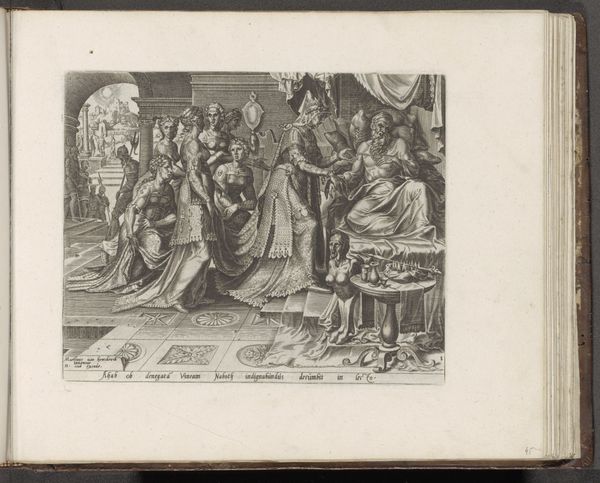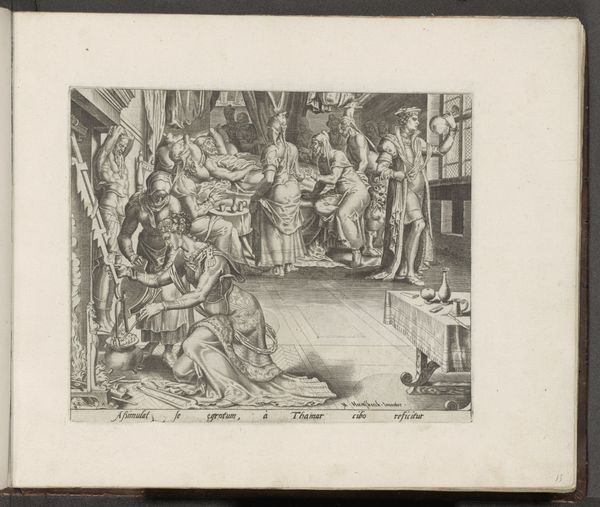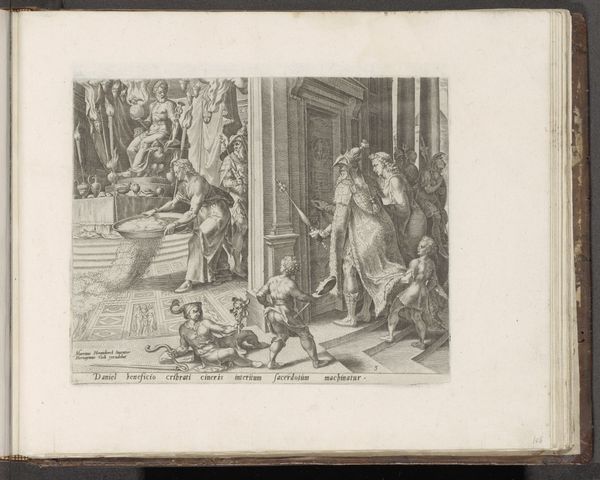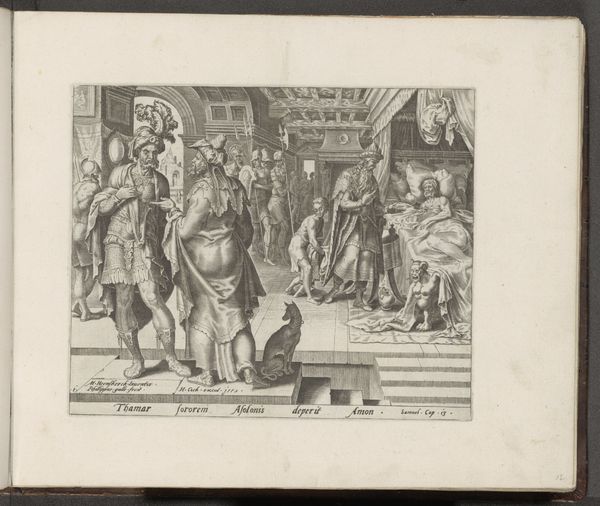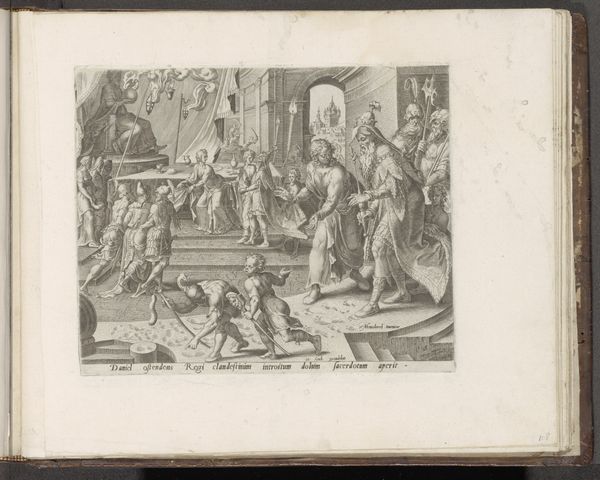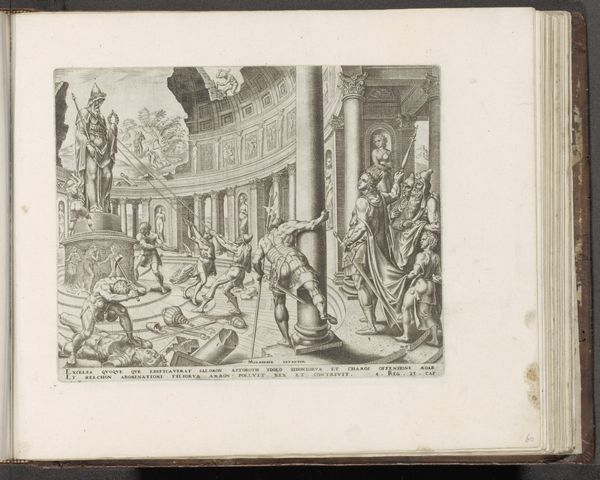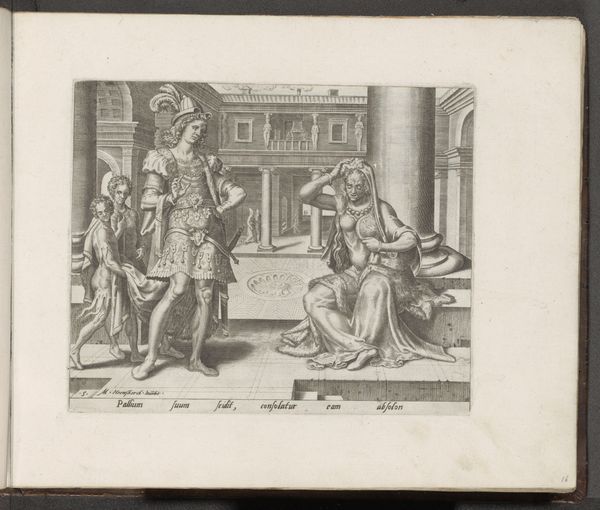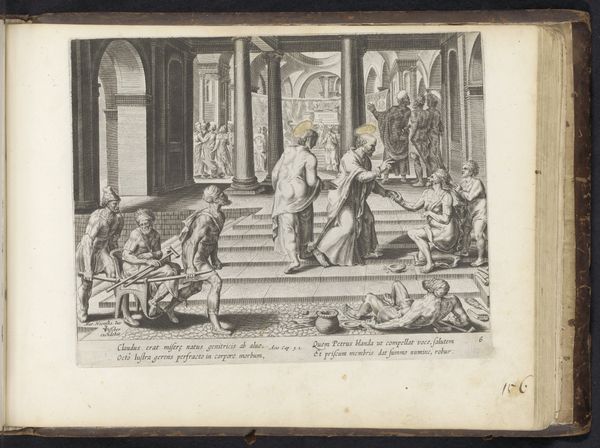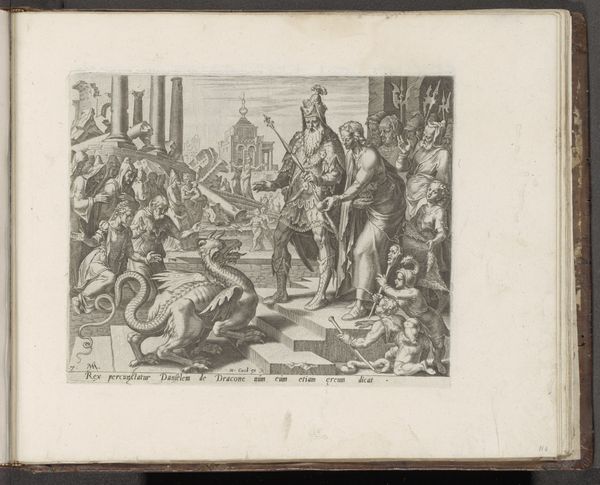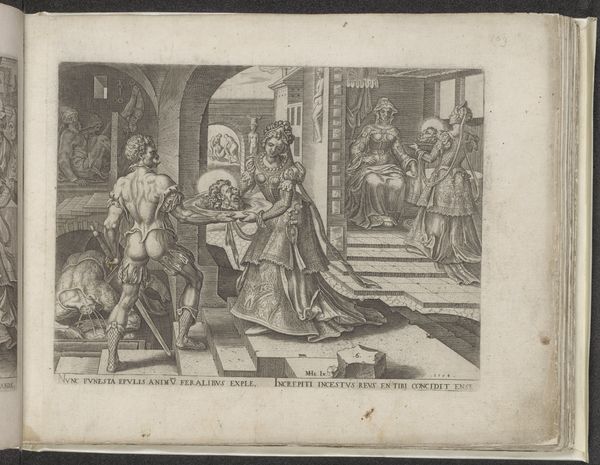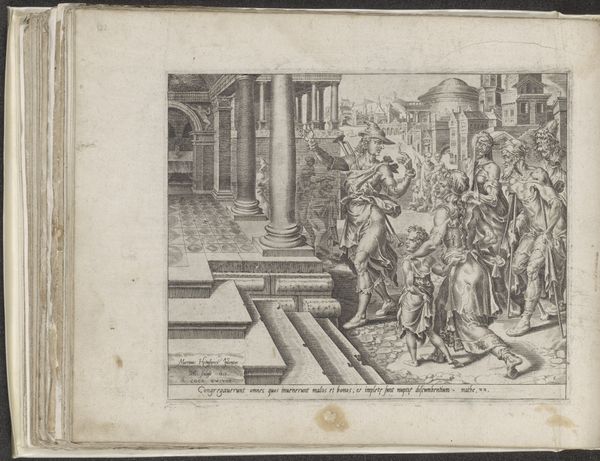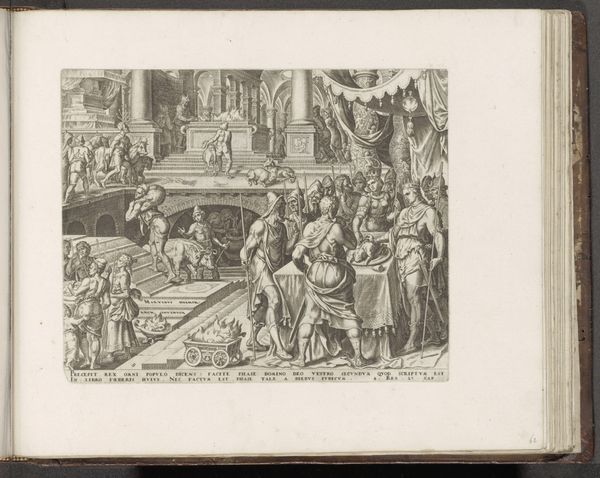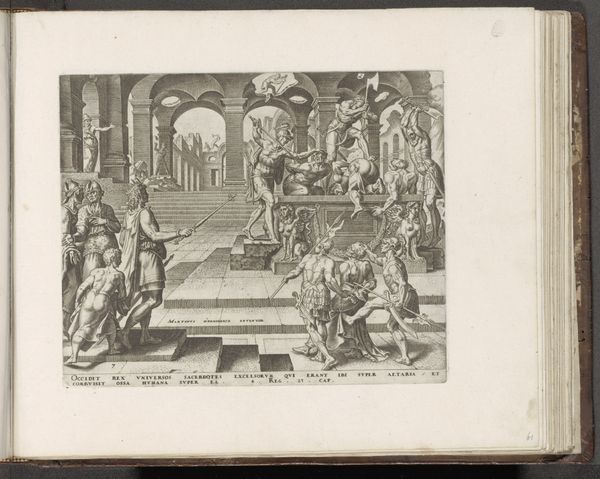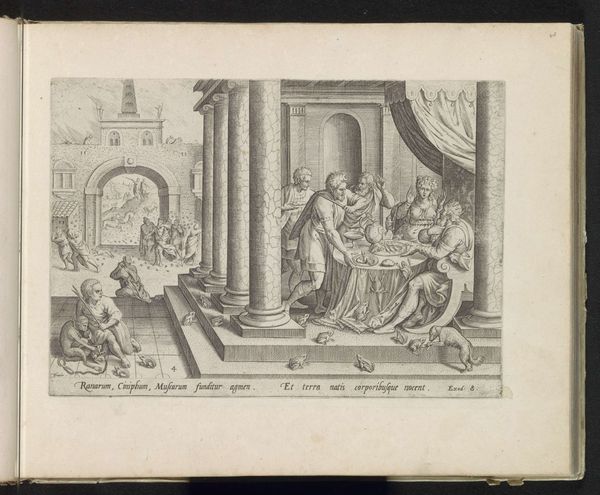
print, intaglio, engraving
#
narrative-art
# print
#
intaglio
#
mannerism
#
figuration
#
history-painting
#
engraving
Dimensions: height 201 mm, width 248 mm
Copyright: Rijks Museum: Open Domain
Philips Galle created this print, "Daniel Refuses to Worship the Idol Bel," in the late 16th century. It's made using the intaglio process. Galle would have used a sharp tool called a burin to incise lines directly into a copper plate. The plate is then inked, and the surface wiped clean, leaving ink only in the engraved lines. When pressed against paper, the image transfers. Look closely, and you'll notice the remarkable detail achieved through this painstaking process. The varying density and direction of lines create subtle gradations of tone, bringing volume and depth to the scene. See how this technique renders the folds of fabric, the texture of beards, and the play of light across the architectural setting. The art of engraving was crucial for disseminating images widely in early modern Europe, allowing stories and ideas to circulate beyond the elite. Galle’s print is a testament to the power of skilled craft in shaping cultural and religious narratives, demonstrating how the labor-intensive process of printmaking could amplify messages of faith and resistance.
Comments
No comments
Be the first to comment and join the conversation on the ultimate creative platform.
